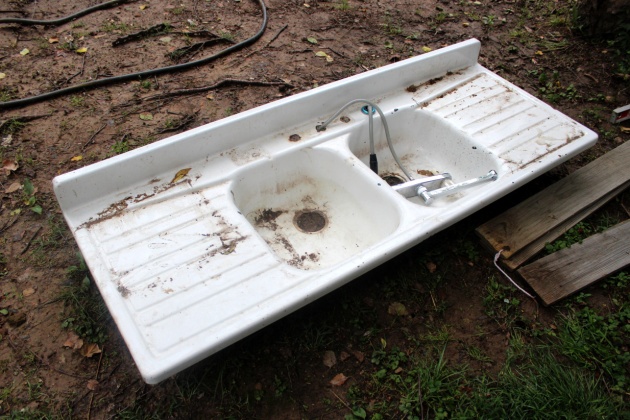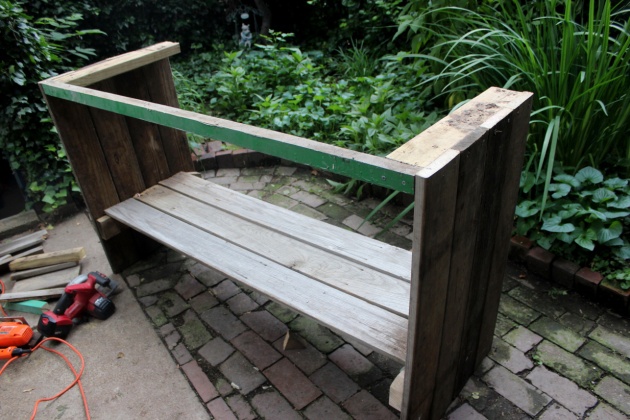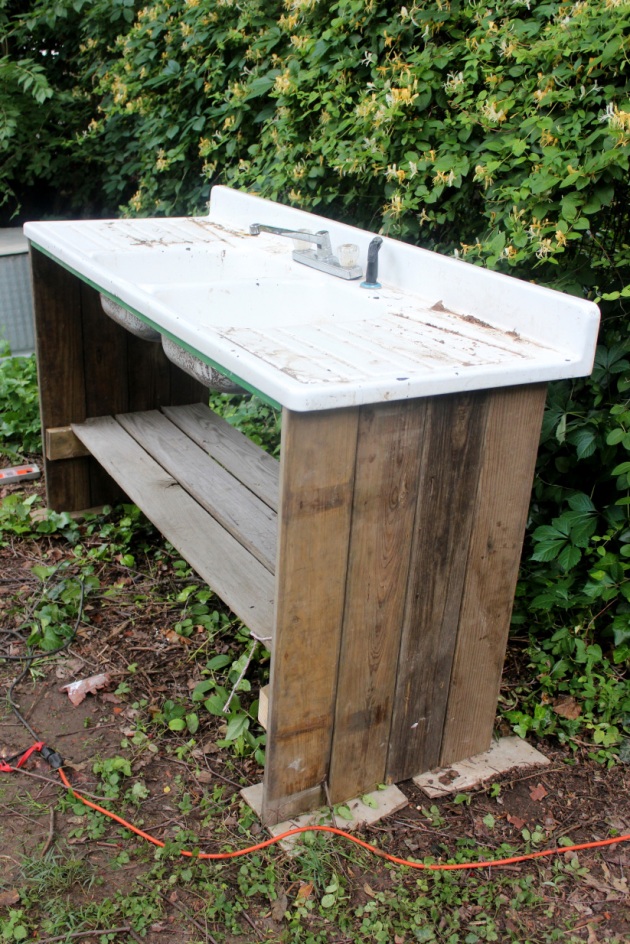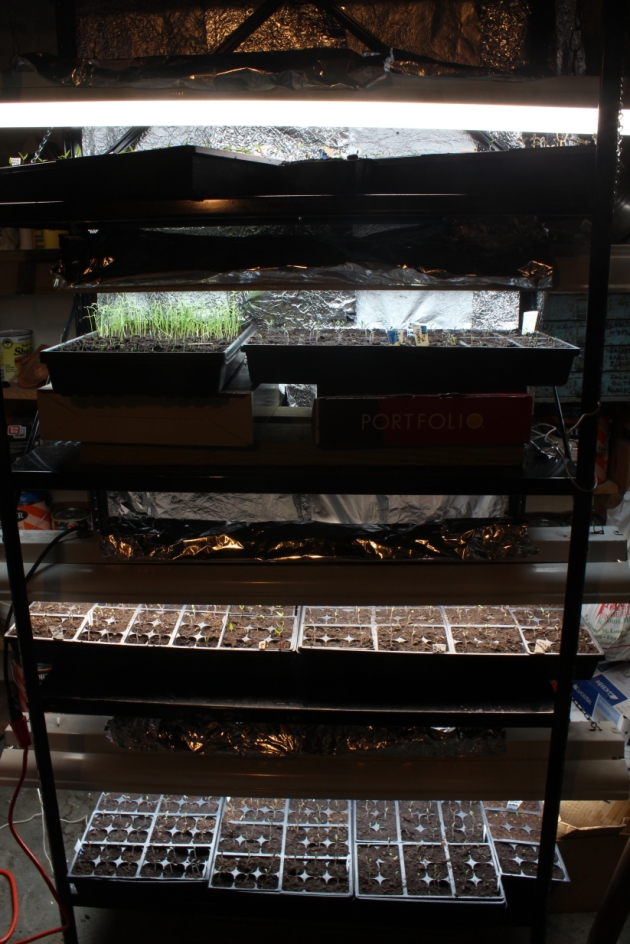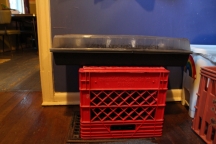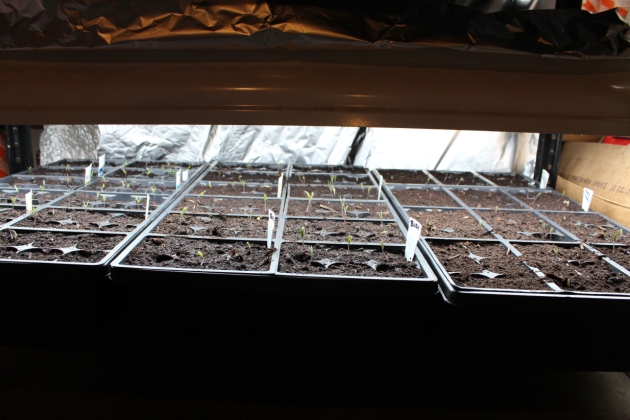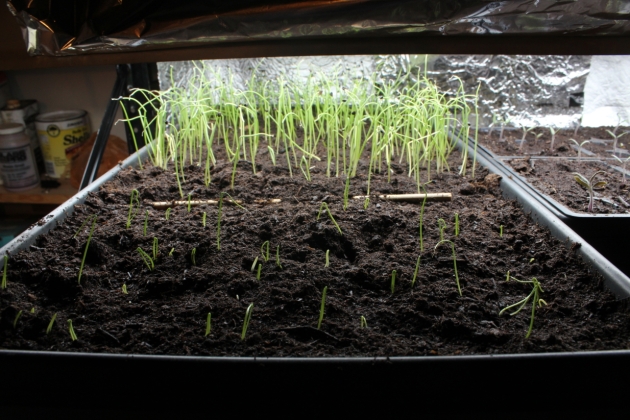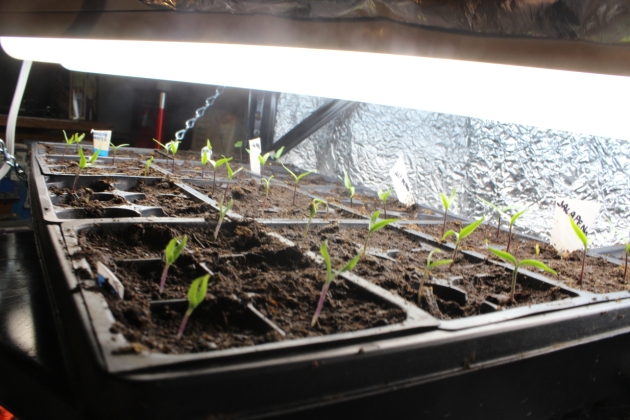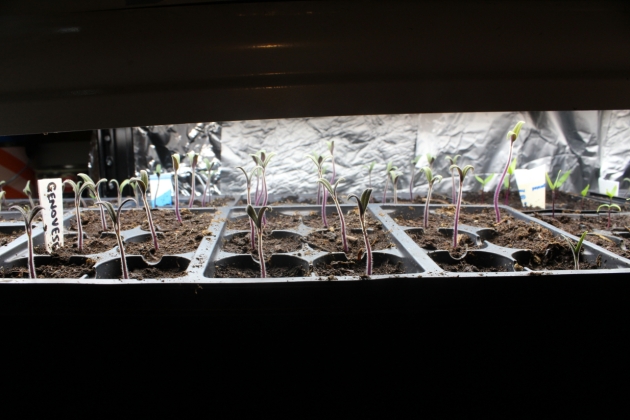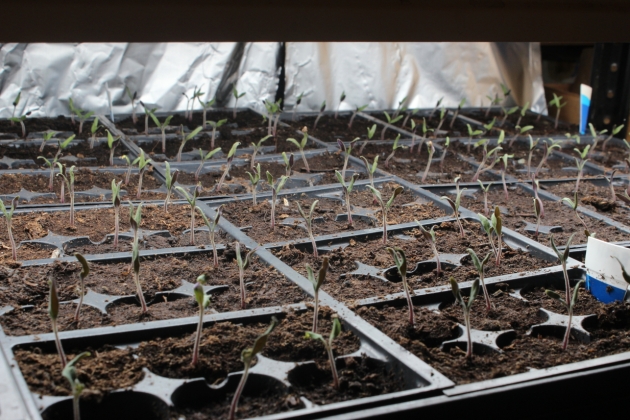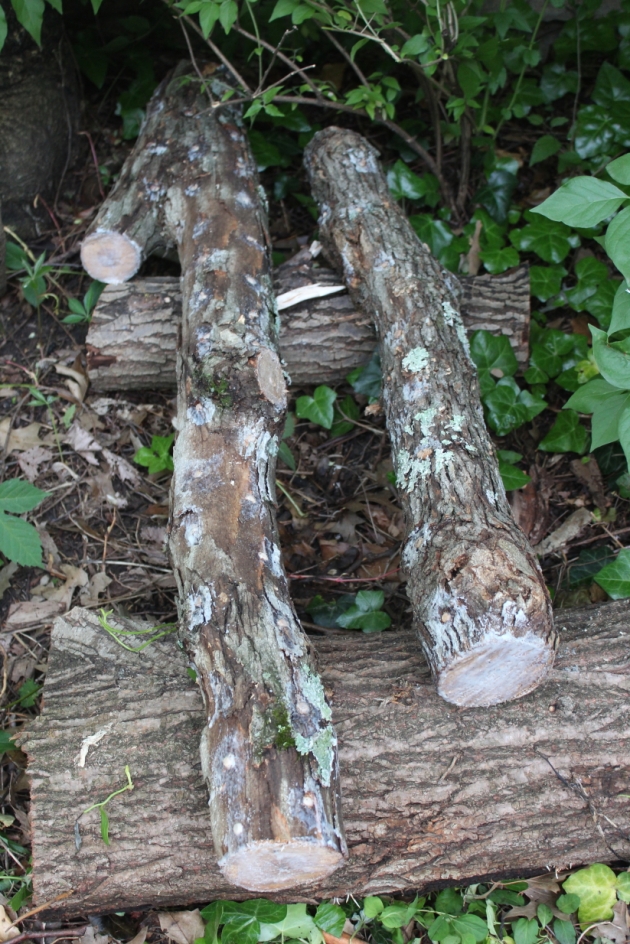Seitan is a high-protein, vegetarian meat substitute that has, along with tempeh, allowed us to minimize our consumption of processed tofu, which is best eaten in moderation, as there are several studies debating its health effects. Seitan is wheat gluten that has been separated from the starch, leaving a protein-rich, elastic material.
You can buy seitan already formed and flavored (expensive), make your own using vital wheat gluten flour (still somewhat expensive), or make your own from flour (cheap!). We had been following this recipe to make a tasty seitan log from vital wheat gluten until yesterday, when we finally made our own from flour. It was incredibly easy. Here’s how we did it:
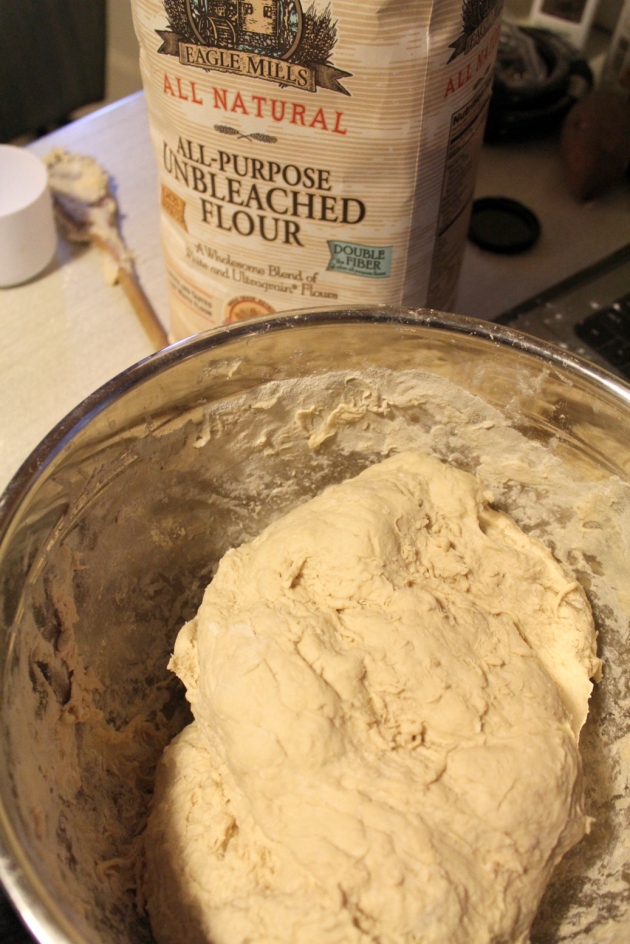 We followed the process from this how-to on Forkable, though we changed it up a bit. We mixed 12 cups of unbleached flour and 6 cups of water to form a ball of dough, and kneaded it for a few minutes. We put the dough in a large bowl and covered it entirely with water and let it soak for about half an hour. The water turned milky white as the starch started to leach out of the dough. We put the bowl in the sink and kneaded the dough in the water until it started to feel rubbery.
We followed the process from this how-to on Forkable, though we changed it up a bit. We mixed 12 cups of unbleached flour and 6 cups of water to form a ball of dough, and kneaded it for a few minutes. We put the dough in a large bowl and covered it entirely with water and let it soak for about half an hour. The water turned milky white as the starch started to leach out of the dough. We put the bowl in the sink and kneaded the dough in the water until it started to feel rubbery.
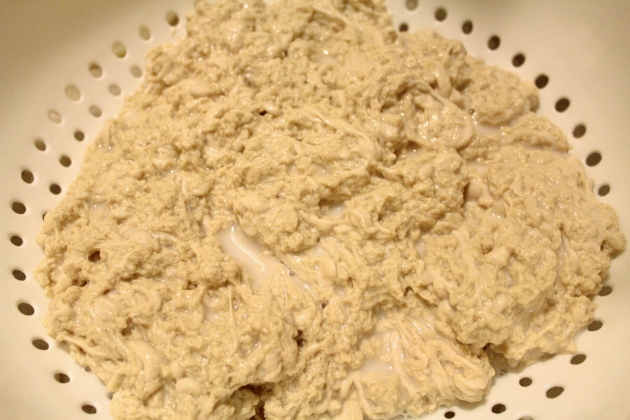 After the underwater massage, we dumped the dough into a colander in the sink and began a half-hour long rinsing and kneading session.
After the underwater massage, we dumped the dough into a colander in the sink and began a half-hour long rinsing and kneading session.
 As you knead and rinse to remove the starch, the dough starts to get denser and more elastic. You can control the texture of your seitan by kneading more or less. For our purposes, we wanted a chewier result so we aimed for a texture like the smaller ball at the top right, while the the bigger mass in the middle still needed some kneading.
As you knead and rinse to remove the starch, the dough starts to get denser and more elastic. You can control the texture of your seitan by kneading more or less. For our purposes, we wanted a chewier result so we aimed for a texture like the smaller ball at the top right, while the the bigger mass in the middle still needed some kneading.
Most seitan recipes at this point will instruct you to form the gluten into a ball and boil it in broth. Then you can pack it into containers with the broth and refrigerate or freeze it. We had a different plan.
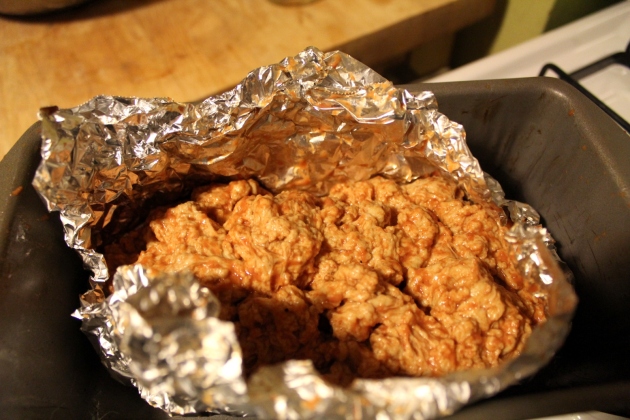 We wanted to try an approach more like the above-mentioned seitan log recipe. So once the gluten was formed, we worked in a marinade of tomato paste, olive oil, soy sauce, and seasonings, then oven baked it in a loaf pan at 325°F for about an hour and a half. We had it wrapped in foil like the log recipe but saw the seitan wouldn’t hold its form and the foil began to stick, so we dumped it in the loaf pan, added more marinade, and covered it with foil. Every twenty minutes or so, we stirred and turned the seitan to keep it from sticking to the pan. We also split some of the bigger pieces into smaller chunks to cook more evenly.
We wanted to try an approach more like the above-mentioned seitan log recipe. So once the gluten was formed, we worked in a marinade of tomato paste, olive oil, soy sauce, and seasonings, then oven baked it in a loaf pan at 325°F for about an hour and a half. We had it wrapped in foil like the log recipe but saw the seitan wouldn’t hold its form and the foil began to stick, so we dumped it in the loaf pan, added more marinade, and covered it with foil. Every twenty minutes or so, we stirred and turned the seitan to keep it from sticking to the pan. We also split some of the bigger pieces into smaller chunks to cook more evenly.
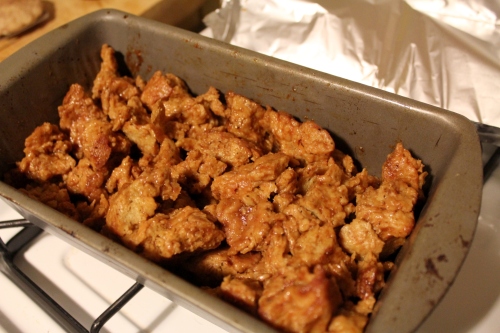 We ended up with about 4 cups of chewy seitan chunks from the original 12 cups of flour. Overall, the process took about 3 1/2 hours, most of which was cooking and waiting time. Next time we’ll try incorporating the marinade and seasonings before the gluten is completely formed so the seitan will be more infused with flavor and maybe achieve the log texture. To be extra frugal, we’ll also re-use some of the starchy water from the rinsing stages to thicken soup stocks and sauces, instead of letting it all go down the drain.
We ended up with about 4 cups of chewy seitan chunks from the original 12 cups of flour. Overall, the process took about 3 1/2 hours, most of which was cooking and waiting time. Next time we’ll try incorporating the marinade and seasonings before the gluten is completely formed so the seitan will be more infused with flavor and maybe achieve the log texture. To be extra frugal, we’ll also re-use some of the starchy water from the rinsing stages to thicken soup stocks and sauces, instead of letting it all go down the drain.
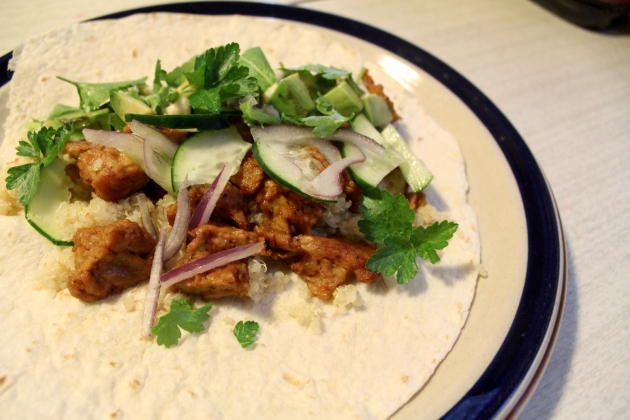 We love to make protein-rich wraps with sauteed seitan chunks, quinoa, cucumbers, red onion, avocado, hummus, and parsley and salad greens from the garden.
We love to make protein-rich wraps with sauteed seitan chunks, quinoa, cucumbers, red onion, avocado, hummus, and parsley and salad greens from the garden.
You can use seitan to substitute any sort of meat, or tofu for that matter. Throw it in a stir fry instead of cubed tofu, crumble it in pasta sauce or add it to chili like the commercial soy crumbles, bread it and fry it for a chicken nugget type snack, we might even slice it in strips and put it on a barbecue pizza! With bulk flour from our co-op, we may never have to buy meat alternatives ever again.

